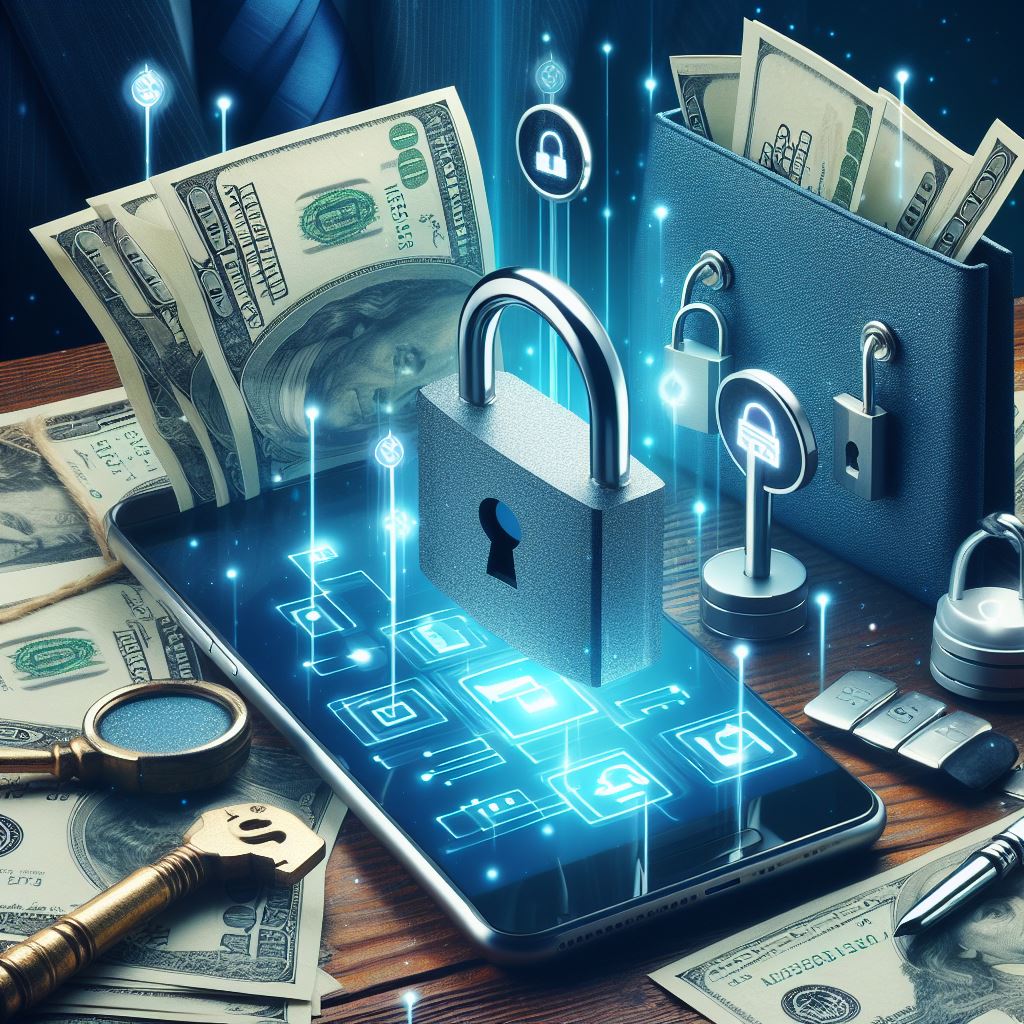
In today’s digital landscape, portable devices like smartphones and tablets have revolutionized the way we manage our finances. With the increasing reliance on these devices for banking services, it’s essential to understand the potential risks and best practices for secure mobile banking. In this comprehensive guide, we’ll explore the benefits and risks of using portable devices for banking, as well as practical strategies to mitigate security threats and safeguard your financial information.
Understanding the Threat Landscape
As portable devices like smartphones and tablets have become ubiquitous tools for banking services, they have also become prime targets for cybercriminals. These nefarious individuals are constantly on the lookout for vulnerabilities in mobile banking apps, aiming to exploit them for their gain. Among their arsenal of tactics, phishing attacks and malware-infected apps stand out as particularly common and insidious methods used to compromise users’ sensitive information.
Phishing attacks represent a form of social engineering where users are deceived into divulging their personal or financial information. Cybercriminals often masquerade as legitimate entities, such as banks or financial institutions, and lure unsuspecting users into clicking on malicious links or providing confidential data. These attacks can occur through various channels, including email, text messages, or even phone calls, and they prey on users’ trust and lack of suspicion.
Furthermore, malware-infected apps pose a significant threat to users’ security and privacy. These malicious applications are designed to surreptitiously infiltrate users’ devices, often disguising themselves as legitimate banking apps or offering enticing functionalities. Once installed, they can compromise sensitive data, track users’ activities, or even take control of their devices without their knowledge. The consequences of such infections can be severe, ranging from financial loss to identity theft and other forms of cybercrime.
However, by understanding these prevalent threats, users can adopt proactive measures to safeguard themselves against potential breaches and identity theft. Firstly, it’s crucial to remain vigilant and skeptical of unsolicited communications or requests for sensitive information, especially from unknown or unverified sources. Users should also exercise caution when downloading apps, ensuring they only install applications from trusted sources like official app stores and reputable developers.
Additionally, staying informed about the latest cybersecurity trends and practices can empower users to recognize and mitigate potential threats effectively. Regularly updating devices and apps, implementing strong authentication methods such as biometrics or two-factor authentication, and utilizing security features like encryption and remote wipe capabilities can further enhance protection against cyber threats.
Optimizing Security in Mobile Banking
In the realm of mobile banking, prioritizing security is paramount to safeguarding sensitive financial information. To ensure robust protection, adhering to best practices is essential.
Firstly, adopting strong passwords or utilizing biometric authentication methods like fingerprint or facial recognition adds an extra layer of security. These measures significantly fortify access controls and deter unauthorized entry into banking applications.
Moreover, maintaining up-to-date mobile devices with the latest security patches is imperative. Regular updates address vulnerabilities and bolster defense mechanisms against emerging threats, thereby mitigating the risk of exploitation by malicious actors.
Utilizing reputable banking apps sourced from official stores further enhances security. Official platforms undergo stringent vetting processes, ensuring the authenticity and integrity of applications, and minimizing the likelihood of encountering counterfeit or compromised software.
Additionally, exercising caution when connecting to networks is crucial. Avoiding public Wi-Fi networks, notorious for their susceptibility to interception and snooping, minimizes exposure to potential threats. Instead, opting for secure networks adds an additional layer of protection to sensitive banking transactions.
As mobile banking continues to proliferate, so does the prevalence of cyber threats. Phishing attacks, in particular, remain a persistent menace. These deceptive tactics aim to trick users into divulging personal or financial information by masquerading as legitimate entities. Staying vigilant and exercising skepticism towards unsolicited communications or suspicious links is imperative to thwarting such threats.
Furthermore, incorporating robust security features such as two-factor authentication bolsters defense mechanisms. This additional layer of verification ensures that even if passwords are compromised, unauthorized access to accounts is thwarted, significantly reducing the risk of fraudulent activities.
Enhancing Cybersecurity for Mobile Banking
To bolster security in mobile banking, experts advise implementing two-factor authentication and utilizing a virtual private network (VPN). Two-factor authentication adds an extra security layer by requiring users to provide two forms of identification, enhancing account protection. Similarly, employing a VPN encrypts internet traffic, safeguarding against unauthorized interception.
These measures are crucial in mitigating the risks associated with portable banking devices, ensuring secure access to banking services. As mobile banking continues to gain popularity, the need for robust security measures becomes increasingly apparent. By adopting these practices, users can enjoy the benefits of mobile banking while safeguarding their financial information from cyber threats.
Mitigating Risks in Mobile Banking
To mitigate risks in mobile banking, users should maintain vigilance and actively monitor their accounts for any signs of suspicious activity. Regularly checking account balances and reviewing transaction histories are essential practices to detect any unauthorized access promptly. Additionally, users should exercise caution when downloading apps or clicking on links, ensuring that financial transactions are conducted only on secure networks.
By adopting these proactive measures, users can significantly reduce the likelihood of falling victim to cyber threats associated with mobile banking. Staying informed about potential risks and adhering to best practices for security enhances overall protection for users’ financial information and personal data.
Ensuring Secure Transactions
In the realm of mobile banking, ensuring secure transactions is paramount to safeguarding users’ financial assets. Two-factor authentication emerges as a cornerstone in this endeavor, providing an additional layer of verification beyond traditional passwords. Methods such as receiving one-time codes via SMS or employing biometric authentication, like fingerprint or facial recognition, significantly enhance security measures. By enabling two-factor authentication, users fortify their defenses against unauthorized access and mitigate the risks associated with fraudulent transactions.
Benefits and Risks of Mobile Banking
While mobile banking offers unparalleled convenience and accessibility, users must remain cognizant of potential risks lurking in the digital landscape. Phishing attacks, wherein cybercriminals attempt to deceive users into divulging sensitive information, pose a significant threat. Additionally, the proliferation of malware and the specter of unauthorized access to personal data remain pressing concerns for users navigating the mobile banking sphere.
However, by diligently implementing security measures and staying abreast of the latest threats, users can harness the benefits of mobile banking while minimizing risks to their financial well-being. Proactive steps such as regularly updating security patches, employing strong authentication methods, and exercising caution when conducting transactions on public Wi-Fi networks contribute to a fortified security posture. Moreover, fostering awareness about common cyber threats and adhering to best practices in cybersecurity empower users to navigate the mobile banking landscape with confidence and peace of mind.
Securing Your Portable Devices
In today’s digital landscape, safeguarding portable devices is essential to protect sensitive information and prevent unauthorized access. Implementing robust security measures is crucial to fortify these devices against potential threats.
Key Security Measures:
Users should prioritize the use of strong passwords or biometric authentication methods to secure their devices. Additionally, regularly updating the device’s software and applications helps to patch vulnerabilities and strengthen defenses. Avoiding downloading apps from untrusted sources reduces the risk of malware infections, while enabling device encryption adds an extra layer of protection for personal data.
Preventive Actions in Case of Loss or Theft:
In the event of loss or theft, remote wipe capabilities can be invaluable. By remotely erasing data from the device, users can prevent unauthorized access to sensitive information, mitigating potential risks to their privacy and security.
Staying Vigilant Against Cyber Threats
Users should stay informed about cybersecurity threats by regularly checking security alerts from their banking institutions and reputable sources. In case of suspicious activity or unauthorized access, prompt action is necessary. Contacting the bank to report incidents and changing login credentials can mitigate risks. By remaining vigilant and proactive, users can safeguard their financial information and prevent potential breaches.
In conclusion, while portable devices offer unparalleled convenience for banking services, it’s crucial to prioritize security. By understanding the threat landscape and implementing best practices, users can enjoy the benefits of mobile banking while minimizing risks. Stay informed, stay vigilant, and stay secure to protect your financial well-being in today’s digital age.



